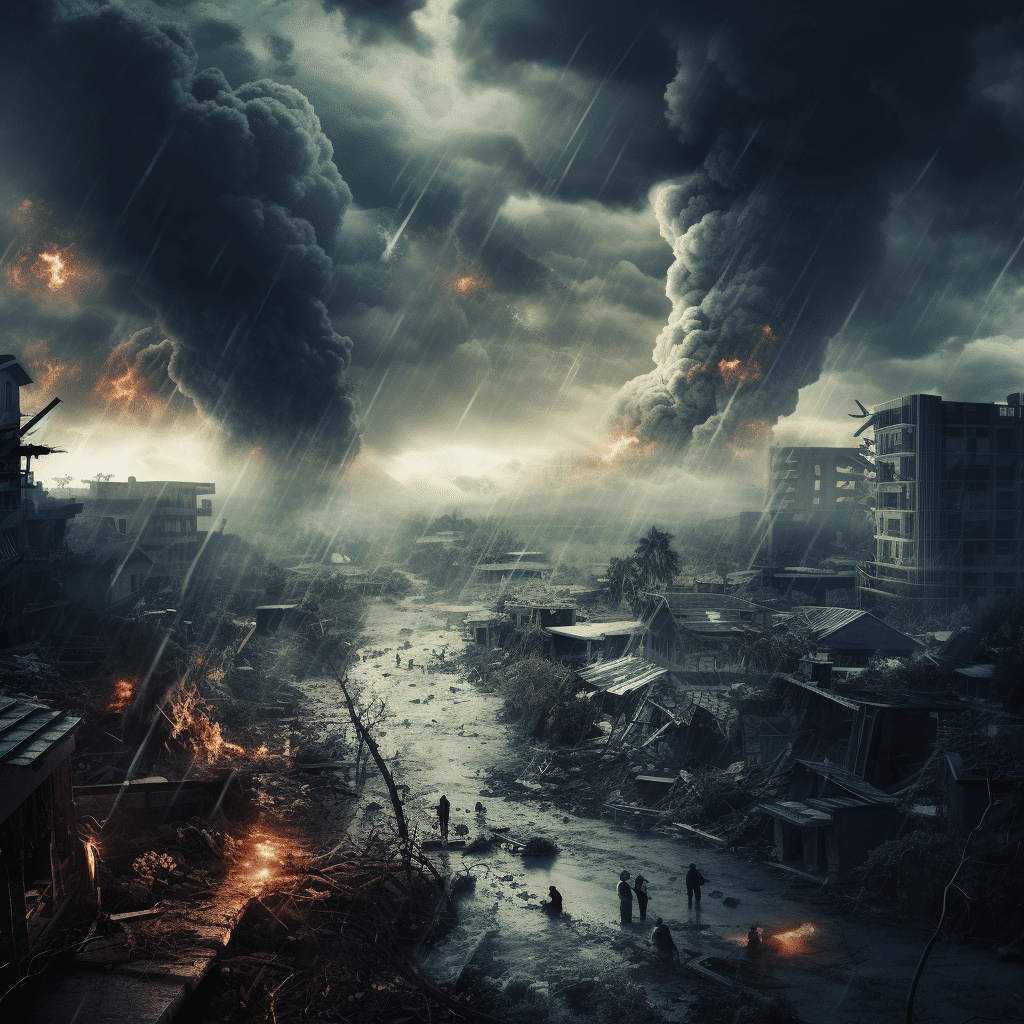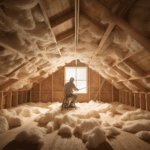When it comes to natural disasters, preparedness is key. Taking proactive steps to protect oneself and others is important. Preparing for emergencies means having a plan. This should include contacts, escape routes, and meeting points. Knowing possible dangers specific to one’s location is also essential. Make an emergency kit with food, water, medical supplies, and flashlights. Check and replenish the kit regularly. Stay informed through weather forecasts and alerts. Learn local emergency protocols. Finally, involve the community. Share knowledge, resources, and support. This strengthens resilience in difficult times.
Table of Contents
Assessing Risks: Identifying Potential Natural Disasters in Your Area

Understand the natural disasters that could happen in your area. Identify the probable risks to take measures for protection. To help, here’s a table with typical disasters and their likelihood of happening:
| Natural Disaster | Likelihood |
|---|---|
| Hurricanes | High |
| Earthquakes | Moderate |
| Tornadoes | Low |
| Floods | High |
| Wildfires | Moderate |
Check this table to know more about the likely hazards in your region. Use this knowledge to plan ahead. Also, think about risks that are unique to your place. For instance, if you live near the coast, be aware of tsunamis or storm surges. If you’re in a landslide-prone area, note that too.
Be informed about local emergency plans and take heed of warnings or evacuation orders. Preparation is key to reduce the impact of disasters. Don’t delay; assess the risks now and take steps to guard yourself and your family. Being proactive can save lives!
Create an Emergency Plan:
In times of natural disaster, it’s essential to have an emergency plan ready. Chaos with no plan can be life-threatening. Here’s a guide to make one:
- Assess risks: Identify potential disasters in your area. Earthquakes, hurricanes, floods, wildfires? Understanding the risks lets you tailor your plan.
- Communication plan: Talk with family, neighbours and local authorities. Backup options like text and social media might be needed.
- Emergency kit: Get non-perishable food, water, flashlights, batteries, first aid and medications. Keep it accessible and let everyone know where it is.
- Evacuation routes: Know the designated routes and have alternatives. Make maps for quick access.
For extra prep:
- Designate a safe meeting point outside your home.
- Maintain an updated list of emergency contacts.
- Practice your plan with all family members.
- Stay informed of weather forecasts and warnings.
- Install smoke detectors, fire extinguishers and carbon monoxide detectors.
By creating an emergency plan and following these suggestions, you’ll be better prepared. Remember, preparation is key for safety! Stay vigilant, stay informed, stay safe.
Strengthening Your Home:
To guard your abode from natural disasters, ponder these ideas:
- Improve foundations: Mend any splits with epoxy and attach steel plates or anchors.
- Stabilize doors and windows: Have impact-resistant doors and windows or reinforce current ones with hurricane shutters or plywood.
- Upgrade for earthquakes: Ask a structural engineer to determine your home’s vulnerabilities and follow their suggestions, like reinforcing walls or adding foundation anchors.
- Strengthen roof: Use hurricane straps or clips to attach the roof to the walls of the house and use impact-resistant roofing materials.
- Care for landscaping: Cut trees regularly to reduce risks of branches falling during storms. Remove dead or weak trees nearby.
- Install sump pump: In flood-prone areas, set up a sump pump in your basement or crawl space to stop water damage.
- Examine insurance coverage: Make sure your homeowners’ insurance covers natural disasters, like windstorms, floods, earthquakes, etc.
- Create emergency kit: Have a well-stocked kit with food, water, medications, flashlights, batteries, and important documents.
Pro Tip: Inspect and keep up your home’s structural integrity often to make sure it can withstand natural disasters.
Evacuation Procedures:
It is vital to comprehend evacuation plans to ensure your safety and the safety of others during a natural disaster. Think about these essential points:
- Create an emergency kit with essential supplies such as water, food, medications, and key documents.
- Keep up to date with evacuation orders via local authorities or emergency management agencies.
- Pick a meeting spot for your family or loved ones in case of separation.
- Follow the designated evacuation routes and avoid taking shortcuts to avoid congestion and potential risks.
Moreover, be aware of any details that are particular to your area. This could include being familiar with alternate evacuation routes and following specific commands from local authorities.
True History:
The tragedy of Hurricane Katrina in 2005 highlighted the need for effective evacuation plans. This disaster in New Orleans saw many residents struggle with limited resources and ineffective communication systems. This experience has encouraged changes in emergency preparedness strategies across the country.
Preparing for Power Outages:

Stock up on emergency items, like flashlights, batteries, and food that lasts!
Also, buy a backup generator to keep appliances running during outages.
Set up a plan with your family and neighbors to stay in touch during power cuts.
Unplug sensitive electronics to avoid any damage!
For extra help, pack a battery-powered radio in case of emergency alerts.
Safety During the Disaster:
Safety is key during a disaster! Here are some tips to follow:
- Look for a safe shelter away from windows and potential falling objects.
- Pay attention to evacuation orders and act promptly.
- Have an emergency kit with food, water, and first aid supplies.
- Keep communication devices charged and stay in touch with family and emergency services.
- If outside during a hurricane or tornado, seek shelter in a low-lying area or a sturdy building.
Remember that every disaster is different. Weather, location, and severity all affect safety protocols. Get the latest info from trustworthy sources.
Pro Tip: Practice evacuation drills regularly so you can react swiftly in an emergency.
After the Disaster:
After the disaster, fast action is essential for safety and recovery. Here are some must-dos:
- Communication: Connect with family and tell them your situation.
- Medical Assistance: Get help for any injury.
- Shelter: Find a safe place if your home is destroyed or unsafe.
- Food & Water: Get clean drinking water and store non-perishable food.
- Utilities: Check for gas, electrical & water damage.
- Insurance Claims: Record the damage & submit insurance claims.
Plus, remember:
- Emotional Support: Ask friends, family or support groups for help.
- Community Assistance: Help rebuild & help others affected.
A small town hit by a hurricane shows the importance of post-disaster preparation. Despite being ready for the storm, they faced problems finding shelter due to huge demand. This shows the value of fast action and local resources in such cases.
Conclusion: Encouraging the Importance of Preparedness.
Being ready for unexpected events is paramount. To foster this mindset, it’s key to educate people about preparedness. Instilling a sense of responsibility and giving practical tips can empower communities to protect themselves.
Emphasizing the potential consequences of being unprepared can create urgency. Showing real-life examples and stats can make people realize natural disasters can happen anywhere. Sharing stories of resilience and recovery can inspire action.
Educating people on risks in their area can motivate them to be proactive. Providing information on natural disasters – like hurricanes, earthquakes, or wildfires – enables them to tailor their efforts.
Offering practical suggestions can further encourage preparedness. Creating emergency kits, developing evacuation plans, staying informed, and practicing drills are all options.
Highlighting success stories can reinforce the importance of taking action. Sharing accounts of individuals or communities who minimized damage or saved lives due to their preparedness efforts can motivate others to do the same.
Frequently Asked Questions
FAQ 1: How do I prepare for a natural disaster?
Answer: To prepare for a natural disaster, you should create an emergency plan, assemble an emergency kit, stay informed about potential hazards in your area, secure your home, and know evacuation routes.
FAQ 2: What should be included in an emergency kit?
Answer: An emergency kit should include essential items like non-perishable food, water, medications, a first aid kit, flashlight, batteries, a battery-powered radio, personal hygiene items, important documents, and cash.
FAQ 3: How can I secure my home against natural disasters?
Answer: To secure your home, you can reinforce doors and windows, install storm shutters, clear gutters and drains, secure heavy items, trim trees, and ensure your roof is in good condition. It’s also important to know where and how to shut off utilities.
FAQ 4: How can I stay informed about potential natural hazards?
Answer: You can stay informed by signing up for local emergency alerts and notifications, monitoring news and weather updates, following social media accounts of relevant authorities, and having a battery-powered radio for emergency broadcasts.
FAQ 5: What should I include in my family emergency plan?
Answer: Your family emergency plan should include contact information for family members and emergency services, a designated meeting place, a communication plan, a list of essential medications and medical information, and a plan for pets or individuals with special needs.
FAQ 6: What should I do during a natural disaster?
Answer: During a natural disaster, it’s important to stay calm and follow the instructions of local authorities. Seek shelter in a safe place, avoid flooded areas, and stay away from windows. If necessary, evacuate to a designated safe location and bring your emergency kit with you.


